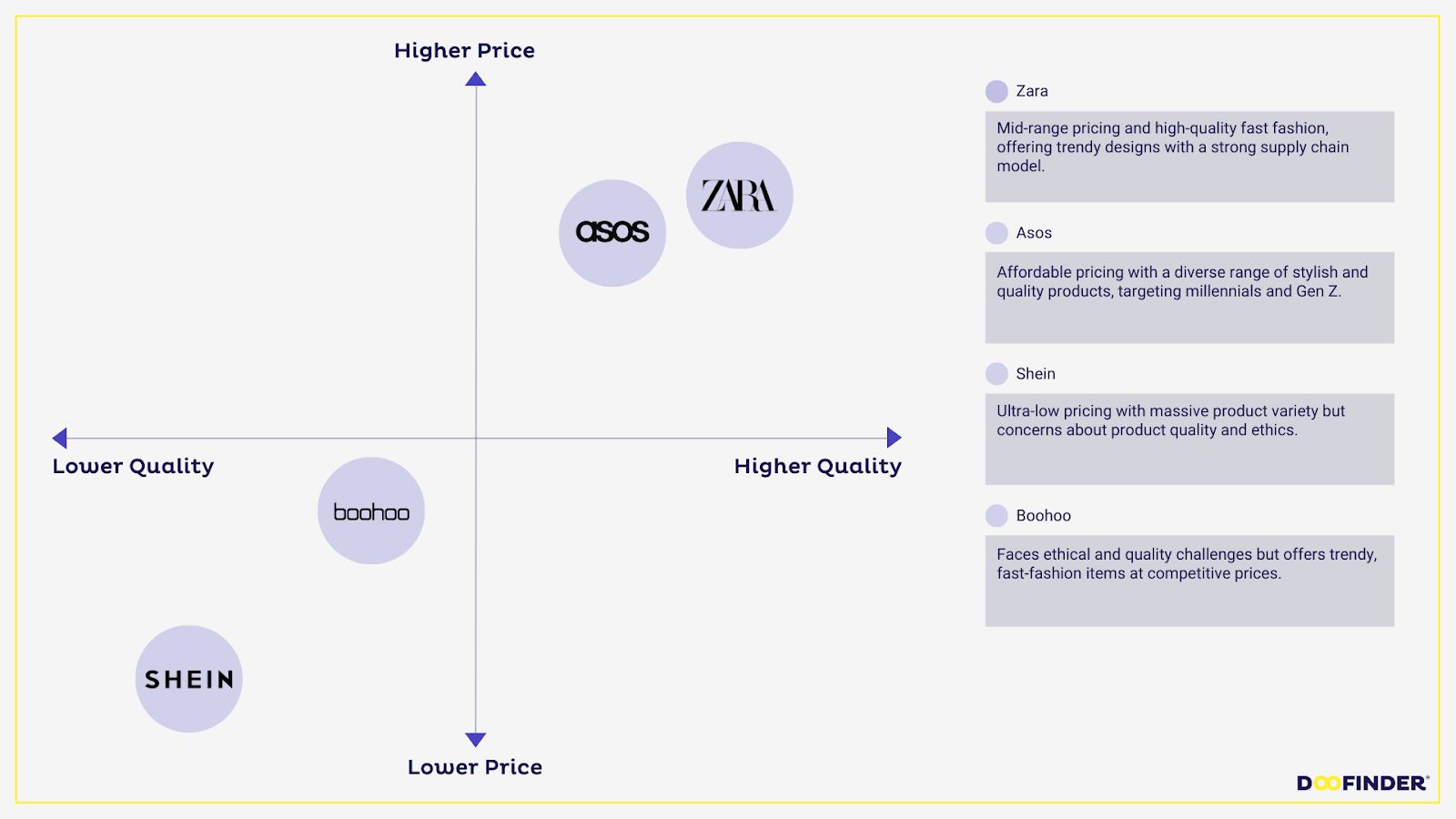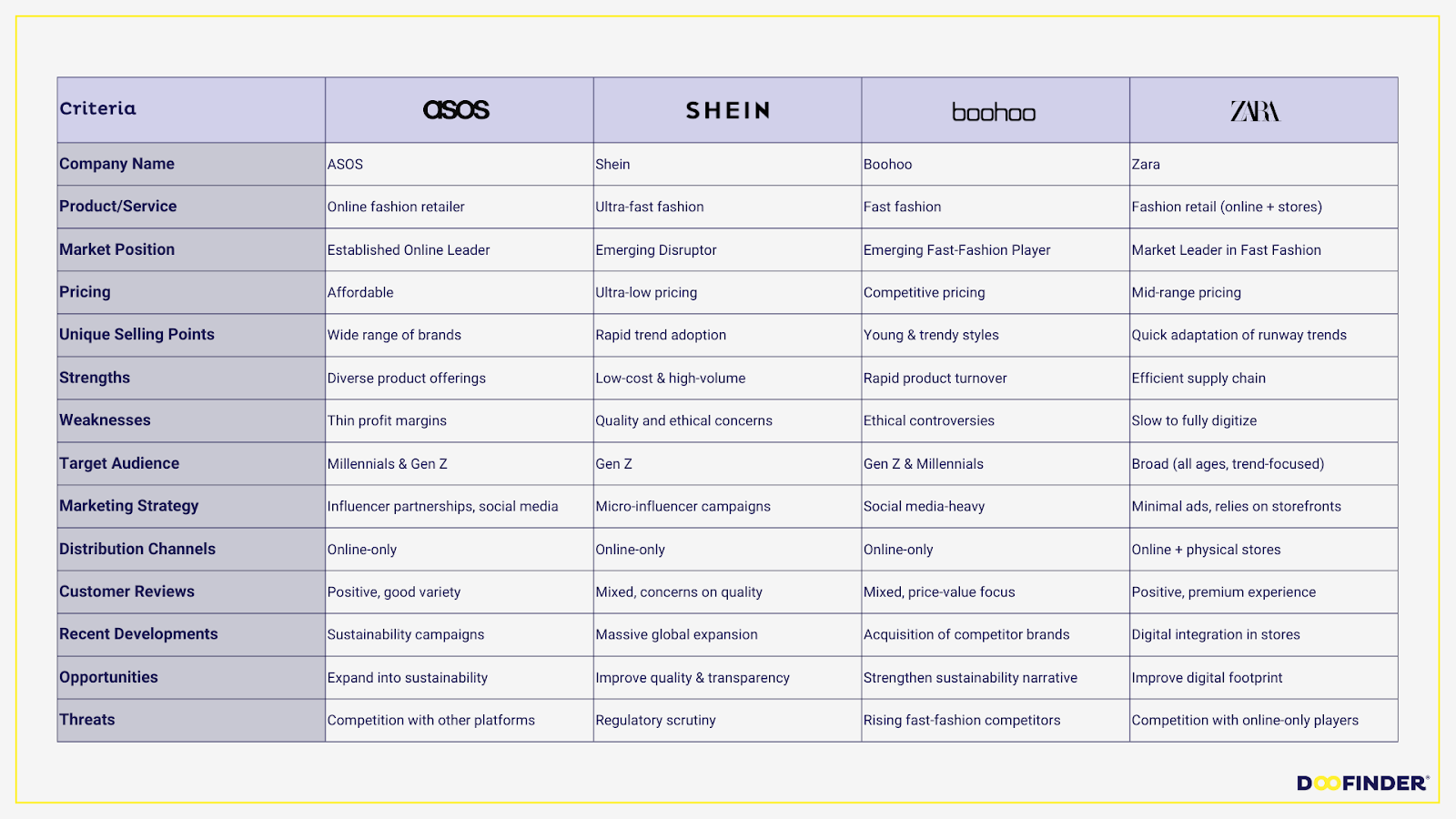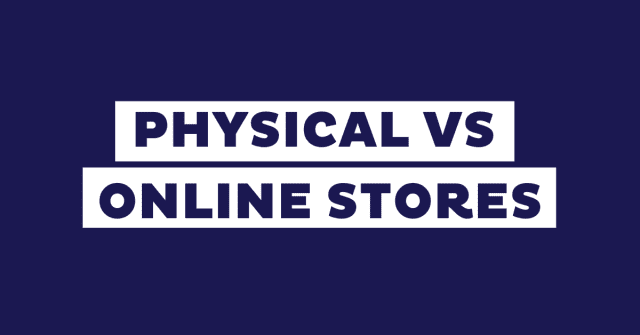Ever wonder how some eCommerce brands seem to have it all figured out? They’re not just lucky. They’ve done their homework.
Competitor analysis is like having a backstage pass to your industry. It shows you what’s working for others, what’s not, and how you can do it better.
For eCommerce businesses, knowing how to perform a competitive analysis can be the key to long-term success.
In eCommerce, where trends change overnight and customers have endless choices, understanding your competition isn’t optional. It’s a strategy.
Knowing your competitors inside and out helps you stay ahead and create the kind of experience your customers are searching for.
By regularly engaging in competitive research, you can adapt to changes faster than your competitors.
This guide will explain the essentials of competitor analysis, including practical tips and examples of how to do competitor analysis effectively.
You’ll gain tools to analyze your competition and use those insights to drive real growth.
What is a Competitor Analysis?
Competitor analysis is the process of studying other businesses in your industry to understand what they’re doing well, where they fall short, and how you can stand out.
It’s about more than just spying on your rivals—it’s a strategic approach to uncover opportunities, refine your approach, and outpace the competition.
By analyzing competitors, you can:
- Spot industry trends and gaps.
- Sharpen your brand’s unique edge.
- Tailor your strategies for better results.
Think of it as your secret weapon to make smarter, more informed business decisions.
The Importance of Competitor Analysis
Competitor analysis isn’t just a box to check; it’s one of the most valuable ways to shape your eCommerce strategy.
By studying your competitors, you get a clear picture of the landscape you’re operating in and the opportunities you can take advantage of.
Reviewing a sample competitive analysis can help you understand how your business fits within your industry and where you can gain a competitive edge.
For eCommerce managers, the benefits go beyond just understanding your competitors. It’s also about understanding your customers better.
When you see what’s working for others, you can figure out how to meet your customers’ needs in ways that feel fresh and unique.
A well-executed marketing competitor analysis example can provide insights into untapped customer pain points.
What Is Included in a Competitive Analysis?
Some of the biggest benefits of competitor analysis include:
- Spotting Market Gaps: Uncover areas where your competitors are falling short and fill those gaps with your own products or services. Reviewing examples of competitive analysis can highlight specific opportunities for innovation.
- Improving Your Offerings: Learn what customers love (or don’t love) about your competitors’ products and use that information to refine your own. Studying a sample competitor analysis can reveal hidden weaknesses in competitor offerings.
- Shaping Your Marketing Strategy: See how others are positioning themselves and find ways to stand out.
- Staying Ahead of Trends: Keep an eye on the latest trends so you can stay relevant and competitive. Regular industry competitive analysis helps you anticipate shifts in customer preferences.
Competitor analysis isn’t about copying what others are doing. It’s about learning from their strengths and weaknesses and using that knowledge to build a strategy that works for you.
Reviewing competitors analysis examples can inspire unique strategies tailored to your business.
Types of Competitors: Direct vs. Indirect
Not all competitors are created equal, and understanding the different types is key to running a successful competitor analysis.
Some businesses compete with you directly, while others might seem unrelated at first glance but still target your audience in some way.
Knowing the difference helps you focus your competitor analysis framework on what matters most.
Here are the two main types of competitors:
- Direct Competitors: These are the businesses that offer the same or very similar products or services to the same audience. For example, if you sell eco-friendly candles, another brand selling the same type of candles to environmentally-conscious shoppers is a direct competitor. A competitor analysis example for eco-friendly candles might include pricing, product features, and sustainability practices.
- Indirect Competitors: These competitors meet the same customer needs in different ways. Sticking with the candle example, a brand selling essential oil diffusers or scented plug-ins might be an indirect competitor because they offer an alternative to candles for people who want their space to smell good. Indirect competitors often reveal opportunities for differentiation in your competitive strategy analysis.
Knowing how to identify competitors and perform industry competitive analysis helps you focus on opportunities that align with your goals.
How to Identify Competitors
Finding your competitors doesn’t have to feel like detective work. Start with these simple steps:
- Search Online: Look at Google search results for keywords related to your business.
- Check Social Media: See which brands your target audience follows and engages with.
- Use Tools: Platforms like SimilarWeb or SEMrush can help identify competitors you might not have thought of.
- Ask Your Customers: Sometimes your customers know exactly who they’re comparing you to when they shop.
Steps to Conduct a Competitor Analysis
Now that you know the types of competitors to focus on, it’s time to roll up your sleeves and start analyzing.
A structured approach ensures you get the insights you need without wasting time. Here’s a step-by-step guide to conducting a thorough competitor analysis:
Step 1: Identify Your Competitors
Use the methods we discussed earlier to pinpoint your direct and indirect competitors. Make a list of at least five key competitors that are actively targeting the same audience or solving similar problems.
Tools like Google search, SEMrush, and social media analytics are great for this step. A competitor analysis framework is essential for staying organized.
Step 2: Gather Information
Start collecting data on your competitors. Focus on these key areas:
- Products: What are they offering? What makes their products unique or appealing?
- Pricing: How are they pricing their products, and are there any discounts or promotions?
- Website and User Experience: Is their site easy to navigate? How fast is it? Is it mobile-friendly?
- Marketing Strategies: Take note of their ads, social media campaigns, and content.
- Customer Reviews: What are their customers saying about their products and services? Look for trends in the feedback, both positive and negative.
Use tools like SimilarWeb for website traffic data, Ahrefs for SEO analysis, and even your competitors’ own newsletters or social media pages to gather this information.
These insights often form the backbone of your eCommerce competitive analysis.
Step 3: Analyze Their Strengths and Weaknesses
Now that you have the data, it’s time to make sense of it. A simple SWOT analysis works wonders here:
- Strengths: What are they doing really well?
- Weaknesses: Where are they falling short?
- Opportunities: Are there any gaps in the market they’re not addressing?
- Threats: What competitive advantages do they have that might be hard to match?
Studying a competitor analysis example can help you spot patterns you might otherwise overlook.
Step 4: Compare and Leverage the Insights
Once you’ve analyzed their strategies, compare them to your own. Look for opportunities to differentiate yourself. For example:
- If your competitors focus heavily on discounts, can you stand out by emphasizing premium quality or exclusive products?
- If they’re weak on social media, could you create a strong presence there to win over customers?
Reviewing examples of competitor analysis can inspire creative solutions to common challenges.
eCommerce Competitor Analysis
For eCommerce managers, competitor analysis goes beyond keeping tabs on the competition. It’s about understanding what makes other businesses successful and spotting areas where you can stand out.
The online space is crowded, and customer expectations are always changing. A robust eCommerce competitive analysis helps you identify what’s working and adapt quickly to meet customer demands.
What to Focus On in eCommerce
Running an eCommerce business comes with unique challenges, so it’s important to look at the details that matter most for online shopping.
Here are a few key areas to explore during your industry competitive analysis:
- Customer Experience: Check how competitors design their websites. Are they easy to use? Are their product detail pages engaging? Small improvements to your site can go a long way in keeping customers around.
- Traffic Sources: Find out where their visitors are coming from. Are they relying on organic search, paid ads, or social media? This can reveal where they’re focusing their efforts and help you spot gaps in your own strategy.
- Product Presentation: Look at how they display their products. Great photos, clear product descriptions, and customer reviews can make a big difference. If they’re lacking in any of these areas, you have a chance to shine.
- Retention Tactics: Pay attention to how they keep customers coming back. Are they using loyalty programs, email campaigns, or personalized recommendations? Understanding what works for them can help you refine your own approach.
How to Use The Insights from Your eCommerce Competitive Analysis
The goal isn’t to copy what others are doing. It’s to figure out where they’re falling short so you can do better. For example:
- If a competitor’s site is slow, focus on optimizing your own for speed. A faster site can provide a better experience and give you a competitive edge in your eCommerce competitor analysis.
- If their product descriptions leave questions unanswered, make sure yours are detailed and helpful. This is a common takeaway from many examples of competitor analysis.
- If they seem inactive on certain social media platforms, you can create content to connect with an untapped audience.
You can also think about how your brand can stand out by addressing common pain points in the industry.
A thorough competitor analysis framework can reveal opportunities to improve shipping times, customer service, or product quality—areas where competitors might be falling short.
Bringing Competitor Analysis to Life
Ever wondered how to bring competitor analysis from theory to action?
Let’s take a look at two simple yet powerful tools that eCommerce brands can use to map out their competitive landscape: the Competitive Analysis Grid and the Competitor Analysis Table.
Competitive Analysis Grid: The Big Picture
The Competitive Analysis Grid is your go-to for visualizing where competitors stand when it comes to price and quality.
In the example provided, four major players—Zara, ASOS, Boohoo, and Shein—are placed on a grid to show how they align with these key factors.
Here’s what you can learn from this:
- Spot the Opportunities: Notice gaps in the grid. For instance, there’s space for a high-quality, mid-range priced brand to emerge. Could this be your chance to shine?
- Understand Your Positioning: Compare where you are on the grid. Are you closer to Zara’s premium quality and mid-range pricing, or Shein’s budget-focused strategy? Knowing your position can help you refine your message.
- Play to Your Strengths: If competitors are crowding a specific area, like low-cost, low-quality fast fashion, consider standing out with a unique offering—such as ethical production or sustainability.
For example:
- Zara wins with a strong supply chain and high-quality offerings at a mid-range price.
- Shein dominates the budget market but faces challenges in quality and ethics.
- Boohoo delivers affordability and trendiness but struggles with similar ethical concerns.
- ASOS provides a well-rounded mix of affordability and style, appealing to younger shoppers.

Competitor Analysis Table: The Details Matter
If the grid gives you the 10,000-foot view, the Competitor Analysis Table zooms in on the specifics.
It breaks down competitors into key categories like pricing, target audience, marketing strategy, and more. This helps you:
- Compare and Contrast: See how each competitor approaches critical areas, from product offerings to customer feedback.
- Spot Weaknesses: Notice where competitors fall short, like ethical concerns for Boohoo and Shein, or Zara’s slower pace in digitization.
- Draw Inspiration: Borrow ideas from what works, like ASOS’s social media-driven campaigns or Zara’s efficient supply chain.
This table also highlights opportunities you can seize:
- Shein’s massive product variety works, but transparency and quality improvements could set you apart.
- Boohoo’s focus on trendy styles is effective, but emphasizing ethical practices could give your brand an edge.
- ASOS’s wide range of brands is appealing, but exploring niche categories could carve out a space for your business.

By using tools like these, you’re not just collecting data—you’re making it actionable. They help you visualize your competition, focus your strategy, and uncover areas where your brand can lead the way.
Remember: competitor analysis isn’t about copying what’s working for others. It’s about finding gaps, learning from what’s out there, and using that knowledge to build a strategy that’s uniquely yours.
Common Pitfalls in Competitive Analysis
Competitor analysis is a powerful tool, but it’s easy to fall into a few traps that can lead to wasted time or missed opportunities.
By knowing what to avoid, you can ensure your analysis stays focused and delivers real value for your eCommerce business.
1. Overlooking Smaller Competitors
It’s tempting to focus only on big-name brands, but smaller competitors often bring just as much insight. They may be operating in niche markets or testing innovative strategies that you can learn from.
Ignoring these players means you could miss out on valuable ideas and opportunities.
2. Copying Without Context
Seeing a competitor succeed with a flashy campaign or specific pricing model can make it tempting to replicate their approach. But what works for one brand may not work for yours.
Always filter competitor strategies through the lens of your own audience and goals to ensure they align with your business.
3. Focusing Too Much on the Competition
While it’s important to know what your competitors are doing, it shouldn’t overshadow your understanding of your customers.
Your goal is to offer the best experience for your audience, not just outshine others. Stay customer-focused and use competitor analysis as a supplement to your broader strategy.
4. Relying on Outdated Information
The eCommerce landscape changes quickly. A competitor’s strategy from last year—or even six months ago—might no longer be relevant.
Regularly update your analysis to ensure you’re working with current data and trends.
5. Missing the Bigger Picture
Competitor analysis isn’t just about spotting weaknesses. It’s also about understanding the broader market.
If you get too caught up in what individual competitors are doing, you might overlook trends that could reshape your industry. Balance the details with an eye on the overall landscape.
Best Practices for Continuous Monitoring
Competitor analysis isn’t a one-and-done task. The eCommerce landscape is always changing, and your competitors are constantly evolving.
To stay ahead, you need to keep your finger on the pulse with ongoing monitoring. Here’s how to make that process efficient and effective.
1. Set Clear Goals for Monitoring
Before diving into continuous analysis, decide what you want to achieve.
Are you tracking pricing trends, keeping an eye on new product launches, or looking for changes in their marketing strategies?
Clear goals help you focus on what matters and avoid drowning in unnecessary details.
2. Automate Where You Can
Manually checking your competitors’ websites, social media, and campaigns every week is time-consuming.
Use tools like Google Alerts to stay updated on mentions of their brand or SEMrush to track keyword movements automatically. This frees up your time for deeper analysis.
3. Focus on Key Metrics
Rather than trying to monitor every move your competitors make, zero in on the metrics that align with your goals. For example:
- Pricing Updates: Are they adjusting prices based on demand or seasonality?
- SEO Rankings: Are they gaining traction for new keywords?
- Marketing Campaigns: Are they running new ad types or promotions that you can learn from?
4. Schedule Regular Check-Ins
Set a routine for reviewing competitor data, whether it’s weekly, monthly, or quarterly. Consistency ensures you catch important changes without spending too much time on minor details.
5. Combine Competitor Insights with Customer Feedback
Competitor analysis is only half the equation. Pair it with customer feedback to see how well you’re meeting expectations compared to others in your industry.
This approach helps you prioritize updates that resonate with your audience.
6. Stay Agile
If a competitor suddenly launches a new product or campaign that gains traction, be ready to adjust your strategy quickly. Staying flexible ensures you’re not caught off guard by unexpected moves in the market.
Make Competitor Analysis Work for Your Business
Competitor analysis might sound complicated, but it’s really just about understanding what’s happening around you so you can make smarter decisions for your business.
By keeping an eye on what others are doing through competitive research, you can spot opportunities, avoid mistakes, and find new ways to connect with your customers.
It’s not about copying or obsessing over your competitors—it’s about using what you learn to stand out. Focus on what makes your business unique and find ways to highlight that in your strategy.
Reviewing examples of competitive analysis is a great way to refine your approach and identify actionable steps.
Start small, stay consistent, and make competitor analysis part of your regular routine. The more you do it, the easier it becomes, and the more value you’ll get out of it.








